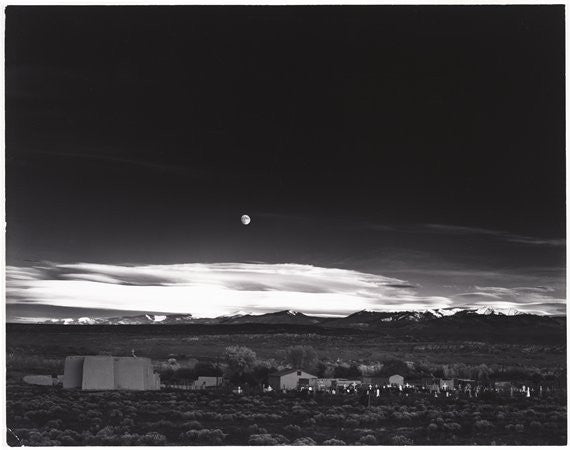Ansel Adams, a masterful photographer and a lifelong conservationist, who encouraged understanding of, and respect for, the natural environment was born Ansel Easton Adams on February 20, 1902, in San Francisco, California, near the Golden Gate Bridge. Adams, shy and self-conscious, received only an eighth-grade education, preferring to learn mainly through following his own interests. From a young age he enjoyed the outdoors, taking many long walks and exploring.
At age twelve Adams began playing the piano. He was serious about music and decided to pursue it as a career. But he was also interested in photography. A family trip to Yosemite National Park in 1916, where he made his first amateur photos, is said to have determined his direction in life. He gave up on the piano and decided to become a full-time professional photographer at about the time that some of his work was published in limited edition collections, such as Parmelian Prints of the High Sierras (1927) and Taos Pueblo (1930).
Adams’ first important one-man show was held in San Francisco in 1932 at H. de Young Memorial Museum. During the 1930’s, he also began his extensive publications on methods of photography, insisting throughout his life on the importance of careful craftsmanship. In 1930 Adams met the famous photographer Paul Strand (1890–1976) while they were working in Taos, New Mexico. Strand and his work had a lasting effect on Adams's approach to photography. Strand encouraged Adams to change his approach from a soft expression of subjects to a much clearer, harder treatment, so-called "straight photography." This idea was further reinforced by his association with the short-lived, but important, group of photographers known as f/64, which included Edward Weston (1886–1958) and Imogen Cunningham (1883–1976). This group helped the development of photography as a fine art. In 1936 Alfred Stieglitz (1864–1946) gave Adams an one-man show in his New York gallery—only the second time the work of a young photographer was exhibited by Stieglitz.
In 1937 Adams moved to Yosemite Valley close to his major subject and began publishing a stream of volumes, including Sierra Nevada: The John Muir Trail (1938), Illustrated Guide to Yosemite Valley (1940), Yosemite and the High Sierra (1948), and My Camera in Yosemite Valley (1949). Adams went on to open the Ansel Adams Gallery for the Arts. He also taught, lectured, and worked on advertising assignments in the San Francisco area.In one sense,
Ansel Adams's work is an extensive record of what is still left of the wilderness, the shrinking untouched part of the natural environment. Yet to see his work only as photographic images is to miss the main point that he tried to make. The finished product, as Adams saw it, must be thought up before it can be executed. Ansel Adams died on April 22, 1984 in Carmel, California.
View a select grouping of Ansel Adams works online here or speak with a GALLERY M specialist today. ![]()


